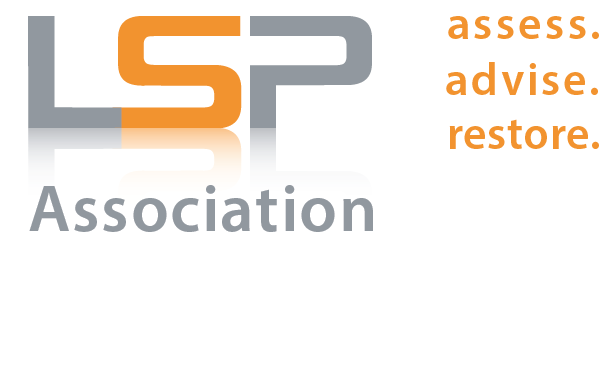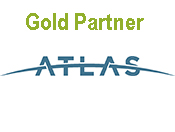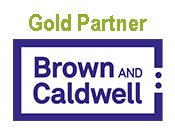Learning from AUL Mistakes: FY 2015 NOAF ReviewBy: Jeanine Grachuk, Esq., Beveridge & Diamond PC, and Loss Prevention Committee Note: After this article was written, the LSPA’s Loss Prevention Committee learned that, through no fault of anyone, it had not received all the NOAFs issued by MassDEP during FY 15. The total numbers of NOAFs cited in the second paragraph of this article are a subset of all FY 15 NOAFs involving AULs. The LSPA’s Loss Prevention Committee began its annual review of Notices of Audit Findings (NOAFs) issued by MassDEP with a review of NOAFs that discuss Activity and Use Limitations (AULs). As AULs are being used more and more to close sites, and with the expanded use of AULs in the 2014 revisions to the Massachusetts Contingency Plan, it is more important than ever that LSPs create AULs that survive MassDEP scrutiny. We hope that by describing the issues MassDEP is identifying as the most frequent violations, fewer LSPs will make these mistakes. Approximately 129 of the fiscal year (FY) 2015 NOAFs discussed audits of submittals that contained an AUL. Of these, 34 identified violations related directly to the AUL. These NOAFs were divided among the MassDEP regions as follows:
The AUL violations that MassDEP identified most frequently in its FY 2015 reviews are:
1.Failure to refer to the AUL in an instrument of transfer. Whenever there is a transfer of any interest in or right to use a property subject to an AUL, §40.1074(5) of the MCP requires that the AUL “be incorporated either in full or by reference” in the document that effects the transfer. During FY 2015, MassDEP identified a violation of this provision in 22 separate NOAFs, which is 65% of all NOAFs identifying violations related to AULs. In NOAFs where this was the only issue identified, the MassDEP required the new property owner to file with the registry of deeds either a confirmatory AUL or an affidavit confirming that the AUL does affect the deed, mortgage, or other instrument of transfer filed after the AUL. As a practical matter, while the prior owner may be responsible for the failure to refer to the instrument of transfer, only the current owner can file the corrective documents on the property’s title. In one NOAF, MassDEP provided this explanation: "It is the responsibility of both the former and the current property owners to correct the instrument of transfer. [Former owner] is responsible for this violation of the AUL. However, only [current owner] as the current owner, has the legal ability to sign and record the corrective document." The Loss Prevention Committee recognizes that LSPs are often no longer associated with a site when transfers occur, and therefore are not in a position to recommend that the AUL be referenced in the deed, lease, or other document. Despite this, the Committee believes it would be helpful for LSPs to remind their clients of the reference requirement at the time the AULs are prepared. MassDEP’s regulations require more than the recording or registering of the original AUL. They also require that the existence of the AUL be identified in every subsequent document (e.g., deeds, easements, mortgages, leases, licenses, occupancy agreements) relating to that property to avoid the possibility that a new owner or user of the land could be unaware of the existence of the AUL. Since AULs are intended to remain on property forever (unless terminated because they are no longer necessary to achieve a condition of No Significant Risk), such reminders may indeed be prudent. The failure to refer to an AUL on such a document may result in a Notice of Noncompliance from MassDEP, in some cases requiring correction such as by filing a confirmatory AUL. Further, at least one court voided a commercial lease, after a substantial and expensive buildout, just because the lease did not refer to the AUL. See Cummings Properties, LLC v. Massachusetts General Physicians Organization, 2 Mass. L. Rprt. 205 (October 2, 2007). 2. Failure to attach documentation of signatory authority. Section 40.1074(2)(c) of the MCP requires documentation of signatory authority to be attached to any AUL that is signed by an individual on behalf of an entity. Absent this documentation, MassDEP cannot ascertain whether the person who signed the AUL had authority to do so. If the person did not have authority, the AUL is not valid. What is required to confirm that the signatory has authority to sign depends on whether the entity is a corporation, limited liability company, limited partnership, limited liability partnership, trust, city, town, governmental agency, trust, or other type of entity. The good news for LSPs is that in most cases the client should know what documentation is needed, although the LSP should ask for that documentation and ensure it is attached to the AUL. If the client does not know what is required, the LSP should advise his or her client to consult an attorney. 3. Failure to identify caps or structures required by the AUL in the sketch plan or survey. The MCP does not explicitly indicate that this is required, but MassDEP made the following statement in a Master Q&A from 2007: If there is a barrier (e.g., some form of cap, pavement or building) within the boundaries of the AUL area that must be maintained to ensure a level of No Significant Risk, that barrier must also be depicted on either a sketch or survey plan. Which type of plan is required for the barrier depends on whether the restrictions that apply in the barrier area are the same or different from the restrictions that apply in the larger AUL area. If, for example, the AUL area includes both landscaping and pavement and the restrictions of the AUL are the same for both paved and landscaped areas (e.g. no excavation below 5 feet), the boundaries of the pavement and landscaped areas do not need to be surveyed. In such a case, a sketch plan will suffice to delineate the boundaries of the pavement and landscaped areas within the larger AUL area boundaries. If, on the other hand, an AUL restricts any or all "excavation under paved areas" and the paved areas represent only a portion of the AUL area (e.g. there are grassy areas which do not have exactly the same restrictions as the paved areas), a survey of the paved area is required because the excavation restriction applies only to the paved areas. The same reasoning would apply to cases where there are multiple barriers within the AUL area or different zones and restrictions within an area covered by a single barrier. Three instances that were identified during the FY 2015 NOAF review may be instructive. In one case, the AUL restricted exposure of soil in a particular location described as “below the building in proximity to the north and west foundation.” MassDEP indicated that this language did not provide a clear description of inconsistent uses. MassDEP did not state that identifying this area on a sketch plan or survey was required, but the Committee believes it makes sense to include this NOAF in this category of violation. In another case, MassDEP stated that the “sketch plan does not clearly depict security fencing required by the [AUL] to be maintained.” In a third case, the AUL required maintenance of a barrier that had been placed over upland areas of the site but not on wetland areas. MassDEP stated that the sketch plan “did not delineate the cap … or wetlands at the disposal site, making it difficult to assess the integrity of the cap. When maintenance of any barrier(s) (i.e. pavement or other) is required, the AUL must delineate the boundaries of the barrier(s) on a sketch plan attached to the AUL. If one barrier covers the entire AUL area, the AUL may simply indicate that the barrier, which covers the entire AUL area, must be maintained. 4. Failure to provide a sketch plan that shows the AUL area in relation to the site boundaries. Section 40.1074(2)(a)(5) of the MCP requires that a sketch plan be included that shows the relationship of the AUL area to the limits of the disposal site. The violations identified in the FY 2015 NOAFs included not attaching a sketch plan, attaching a sketch plan that shows the AUL boundaries but not the site boundaries, and attaching a sketch plan that shows the site boundaries but not the AUL boundaries. 5. Failure to provide an appropriate metes and bounds description and/or survey when the AUL area comprises a portion of the property. When the AUL only applies to a portion of a parcel of land, section 40.1074(2)(a)(4) of the MCP requires a metes and bounds description of the portion of the property subject to the AUL and a survey showing that portion. During our review, we identified three NOAFs that identified violations of this requirement. In one case, the survey was simply not included. In the other two cases, the metes and bounds description did not match the survey.
|



































